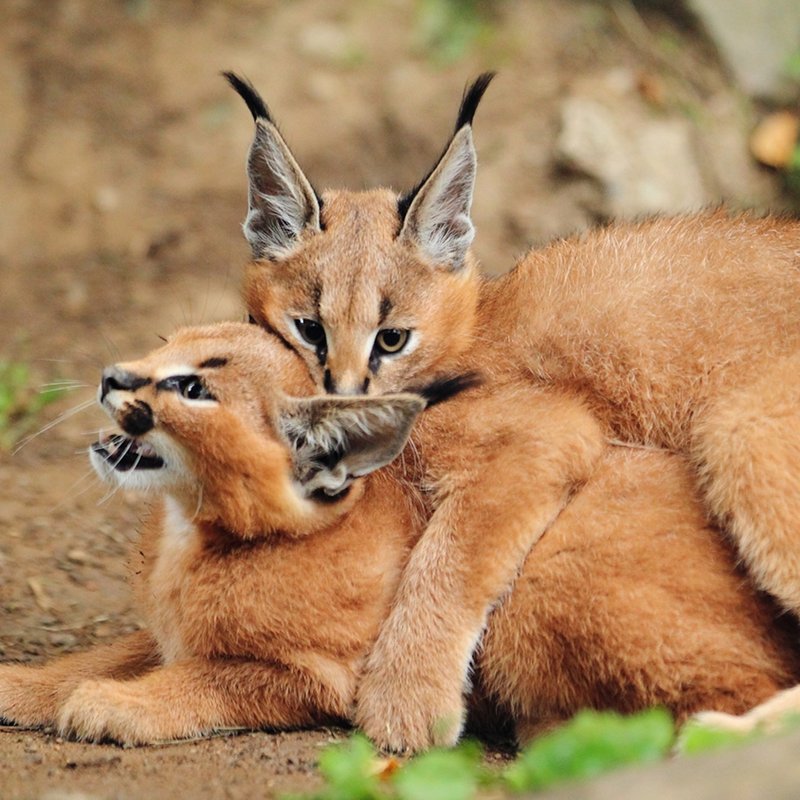
Don’t worry; you’re not alone in wondering how to navigate this unexpected meeting. The key is to stay calm and approach the situation with knowledge and respect. In this article, we’ll break down everything you need to know about caracals—where to find them, how to react during an encounter, and tips for ensuring both your safety and that of the caracal itself. Let’s dive in!
Understanding Caracals: The Basics
Caracals are medium-sized cats, usually about the size of a large dog. With their distinctive tufted ears, sharp teeth, and stunning coats, they’re often mistaken for lynxes. Their habitats range from savannas to woodlands across Africa and parts of the Middle East and Central Asia. Here’s what makes them unique:
- Diet: Caracals are primarily carnivorous and are known for their incredible hunting skills. They can leap up to 10 feet in the air to catch birds!
- Behavior: They are mostly solitary, preferring to hunt and roam alone. This behavior often means that sightings can be quite rare.
- Conservation Status: Despite their adaptability, habitat loss and hunting pressure have impacted their populations in certain areas.
Knowing these basics will help you approach a caracal encounter with better awareness. By understanding their behavior, you can react more appropriately if you cross paths.
Stay Calm: The First Step
If you suddenly spot a caracal, the most crucial thing to remember is to stay calm. Your body language can convey a lot, and panicking might provoke the animal. Here are some tips on how to maintain composure:
– Take a Deep Breath: Focus on your breath. This helps to ground you and prevents instinctual reactions like running away.
– Assess the Situation: Is the caracal alert and aware of your presence, or is it busy hunting? Understanding its focus can help you decide your next move.
– Avoid Sudden Movements: Quick movements can startle the caracal. Instead, remain still and observe the cat to gauge its behavior.
Let’s say the caracal is resting under a tree. In this case, you’re lucky! You can watch it without alarming it. But if it stands up and seems to notice you, you’ll need to take a different approach.
Understanding the Caracal’s Behavior
Caracals have specific behaviors they exhibit when encountering humans. Recognizing these can provide clues about how to react. Here are some common signs:
– Curiosity vs. Aggression: A caracal might cock its head and seem curious, or it could flatten its ears and appear agitated. If it seems curious, that’s generally a good sign. It may just be checking you out!
– Body Language: If the caracal starts to back away, it’s likely trying to keep its distance. However, if it’s staring or approaching, be cautious; it might feel threatened.
Understanding these signals can help you decide whether to move or stay still. Always remember, your goal is to minimize stress for both you and the caracal.
What Not To Do: Avoiding Common Mistakes
There are definitely some actions to avoid if you find yourself in the company of a caracal. Here’s what you should steer clear of:
– Do Not Approach: The urge to get a closer look might be tempting, but getting too close can stress the animal and put you in a risky position.
– Never Feed or Encourage the Animal: Feeding wildlife can disrupt its natural behaviors and lead to dependency on humans. Plus, it could make you seem like a threat.
– Avoid Making Loud Noises: Shouting or clapping can spook or provoke the caracal, leading to unpredictable behavior. Instead, speak softly if you must communicate.
Imagine you’re watching a movie and a loud noise happens—what do you do? You instinctively jump. The same can happen with animals. Keeping your voice low and your movements slow will help keep the situation calm.
How to Safely Exit the Situation
If you feel that you need to leave the area or if the caracal starts showing signs of distress, here’s how to do it safely:
1. Back Away Slowly: Don’t turn your back on the caracal. Instead, move away slowly while facing it. This way, you can monitor its movements without startling it.
2. Stay Quiet: Resist the urge to talk or shout as you’re leaving. Remaining silent will help keep the caracal calm.
3. Leave the Area: Once you’ve backed away to a safe distance, you can turn and proceed to leave the area, keeping your eyes open for any additional wildlife.
It’s like leaving a party—suddenly exiting can draw attention; instead, make a quiet, graceful exit to maintain the peace.
In Summary: Respect, Observe, and Enjoy
Approaching wildlife with respect should always be your priority. Caracals are amazing creatures that play an important role in their ecosystems. By understanding their behaviors and knowing how to react during an encounter, you can ensure the safety of both yourself and the caracal.
So, if you find yourself lucky enough to spot one in the wild, take a moment to observe and appreciate this incredible animal. Remember, the goal isn’t just to see the caracal, but to enjoy the experience without disturbing its natural behavior.
Caracals, with their captivating presence and impressive agility, are a reminder of the beauty of wildlife. So next time you’re out exploring nature, keep your eyes open and embrace the adventure ahead—just in case you catch a glimpse of these elusive felines!

